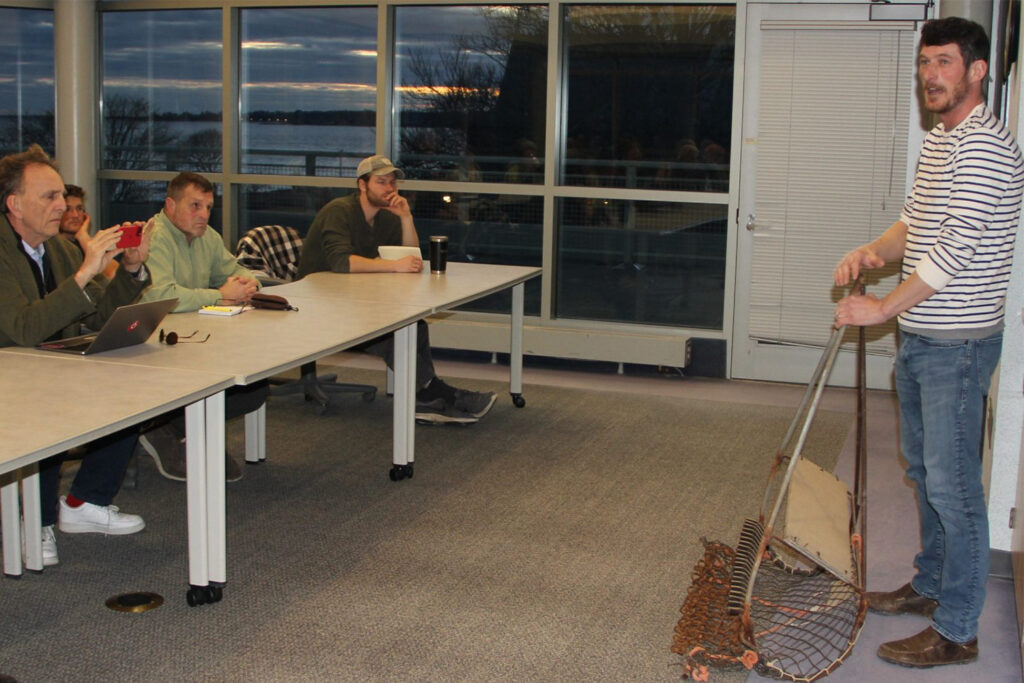
Connecticut university gets $600K grant for aquaculture projects
September 5, 2023
By ANA staff
 Michael Gilman shows an oyster dredge to students in the “Foundations of Shellfish Farming” class at UConn Avery Point last spring. (Photo: Judy Benson, Connecticut Sea Grant)
Michael Gilman shows an oyster dredge to students in the “Foundations of Shellfish Farming” class at UConn Avery Point last spring. (Photo: Judy Benson, Connecticut Sea Grant) University of Connecticut said it received two federal grants worth about US$600,000 towards aquaculture initiatives.
The first grant from the National Oceanic and Atmospheric Administration (NOAA)’s Sea Grant program will provide $398,896 for a two-year project to assess workforce development needs. It was one of 10 nationwide projects announced on Aug. 15 by the Sea Grant that together will receive a total of $3.3 million for seafood industry workforce support.
The second grant of $200,000 was provided by the U.S. Agricultural Research Service to purchase and outfit a trailer that will be used as a mobile laboratory. The mobile lab will be designed to conduct on-field research on the production challenges of kelp aquaculture. The trailer could also be used for training seaweed farmers and other interested sectors.
Some of the funds will also pay for the creation of a publicly accessible manual and video about kelp nursery set-up and operations for small-scale farms.
“We want to align what’s being taught with the needs of industry, and fill in the gaps,” said Tessa Getchis, UConn Extension senior extension educator.
Alysa Mullen, fish lab director and aquaculture educator of the Sound School in New Haven, cited data that showed the majority of students who graduate from high school aquaculture programs leave the state for secondary education and do not return.
“There are several high schools like the Sound School in Connecticut teaching aquaculture in a hands-on setting, but no post-secondary education programs,” she said. “We are losing the students to states like Rhode Island and Maine that have these opportunities for students after graduation.”
Nancy Balcom, associate director, Connecticut Sea Grant said the two projects demonstrate how Sea Grant directly responds to identified needs.
“We look at who is being affected, who needs to be at the table in order to help solve the problem, and what resources are required,” Balcom said. “By securing those resources and facilitating that involvement, we help ensure that collective action leads to shared benefits.”
- From the Editor: Pioneering the future
- Gael Force Group moves ahead with SeaQureFarm development and prototyping





